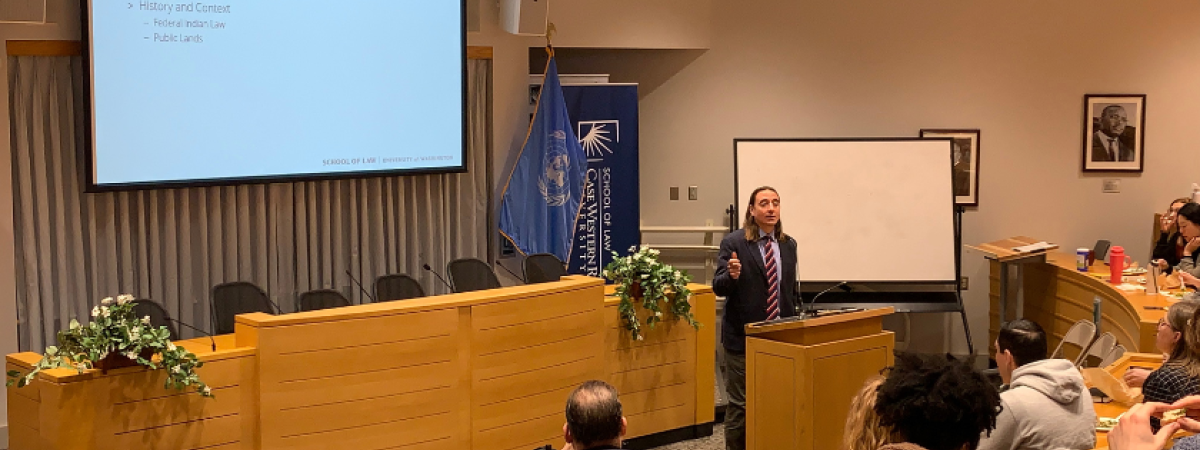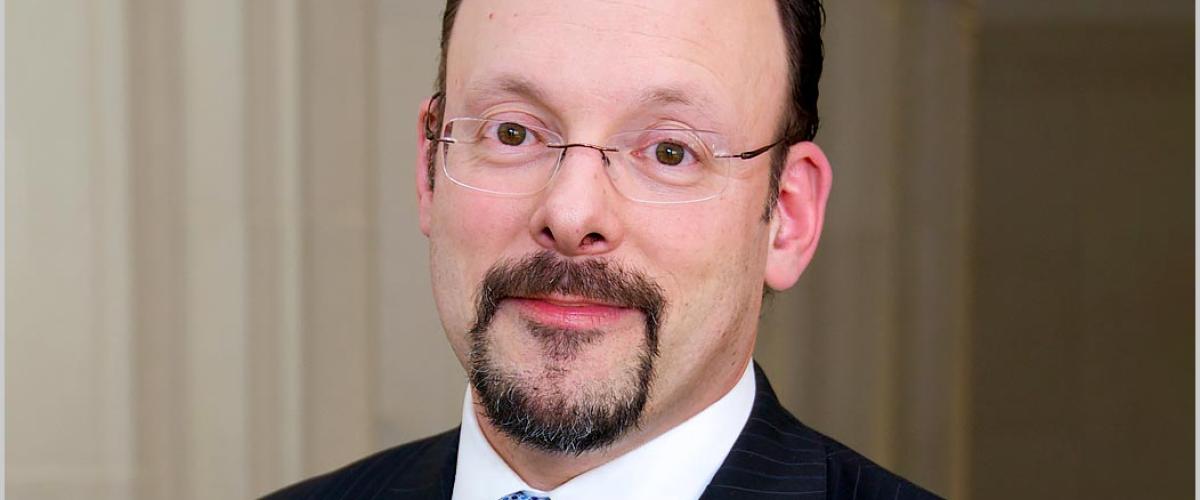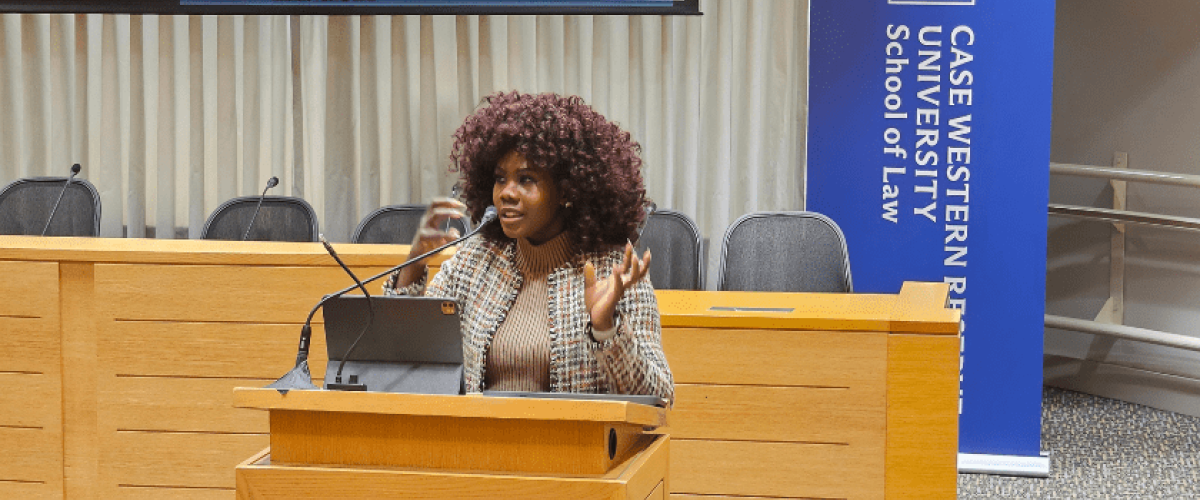Monte Mills, the Charles I. Stone Professor of Law and director of the Native American Law Center at University of Washington School of Law, joined the Coleman P. Burke Center for Environmental Law at Case Western Reserve University School of Law for a discussion on the history and management of the United States’ public lands and its impacts on the country’s Indigenous peoples.
Mills previously taught at the Alexander Blewett III School of Law at the University of Montana, where he also was the co-director of the Margery Hunter Brown Indian Law Clinic. In private practice, Mills was the director of the in-house legal counsel department for the Southern Ute Indian Tribe in Colorado. As director for over 10 years, Mills represented and counseled the tribe on a broad array of issues, including litigation in tribal, state and federal courts and legislative matters before the Colorado General Assembly and the United States Congress.
Mills’ presentation centered on the history of separation and exclusion of Native nations as well as how current efforts are restoring tribal connections to federal lands as a “legal, practical and effective manner [for] the people who were across those landscapes first.”
Mills—who uses the term “Indian tribes” for its legal usage but notes it is not politically correct—began with the history of Federal Indian Law and Public Lands and stated that “indigenous peoples have been on the continent since time immemorial.” Mills outlined two competing legal theories. First, the early approach, brought over by the Europeans, was a nation-to-nation relationship aimed at respecting Native sovereign rights and enforcing treaty protections. Second, the approach coming out of Chief Justice John Marshall’s landmark rulings, was the paternalistic approach that viewed tribal nations as dependent on the United States federal government rather than sovereign nations.
What followed from the second approach was the removal of tribal nations from their lands as the U.S. expanded westward. Mills also discussed how the federal government acquired most tribal lands through treaties. The result of following this second approach was that “the management of public lands grew up separately from Federal Indian Law and the tribal nations themselves.”
Next, Mills discussed modern conflicts between tribal nations, private landowners, and local, state and federal governments, including battles over treaty rights and sacred Native sites. Recent developments from the Supreme Court have begun to turn in the tide in how treaty rights are recognized. Citing Washington v. United States, Mills states that the State of Washington breached U.S.-Native treaties because the state did not remove impediments to salmon breeding grounds. Mills also discussed another win for Native rights, the Supreme Court’s Herrera v. Wyoming, in which the court “applied [normal] rules of interpretation of the treaty, and those rules require that we try to understand how the tribe would have understood the treaty. We (the Court) interpret the treaty liberally in favor of the tribe, and we resolve ambiguities in favor of the tribe.” The court ultimately found that the full breadth of the treaty and the rights it granted to the Native tribes remain.
Mills states that treaties, no matter when they were signed, “remain powerful avenues through which tribes can assert their protections for off-reservation resources.” Although Mills remains optimistic, he states that tribal leaders say the process for recognizing their sovereign rights remains slow for either state or federal governments.
Looking to the future, Mills predicts “a coming revolution in the management of our federal lands.” Mills pointed out the tribal representation among the Biden Administration, including Deb Haaland as secretary of the interior and, recently, Charles F. Sams III as director of the National Parks Service. Mills also discussed recent regulatory actions and guidance statements by the administration that “call for a consensus-seeking model [for] tribal consultation on any issue that may have tribal implications.” Mills believes that recognizing tribal rights is “not just about justice, but it's about repairing the natural landscape” to protect our nation's lands for everyone.
During the talk, audience members asked Mills questions on varying topics, such as the Willow Project, a massive oil-drilling venture approved by the Biden Administration to take place on Alaska’s North Slope. While Mills acknowledged the conflict a large-scale drilling operation poses to native lands in Alaska, he applauded the administration and Secretary Haaland for their transparency in the process toward Native tribes. Visiting Professor Victor Flatt asked Mills about more permanent solutions to tribal conflicts including any legislative measures. Mills noted there is pending legislation in Congress, but that legislation could be only an incremental step compared to sweeping agency actions. Additionally, Mills answered a question on cooperation between state and federal administrative agencies, such as the Bureau of Land Management and state agriculture administrations and tribal communities. Mills stated that the viewpoints of tribal leaders must be in the forefront of the conversation, both to overcome the history of separating tribes from their lands and because of a tribe’s long-standing connection to the land, and that hearing from tribal leaders does not necessarily mean lands would not be used for agricultural or other purposes besides a protected wilderness or national monument.
Watch Mills’ talk online, or learn more about Mills and his advocacy of Native Tribes.
Established with a $10 million endowment in 2019, the Burke Center for Environmental Law at Case Western Reserve University School of Law has become one of the nation’s highest-ranked environmental law centers, with an “A” rating by preLaw magazine (2022). Visit our website to stay up to date on the Burke Center.





